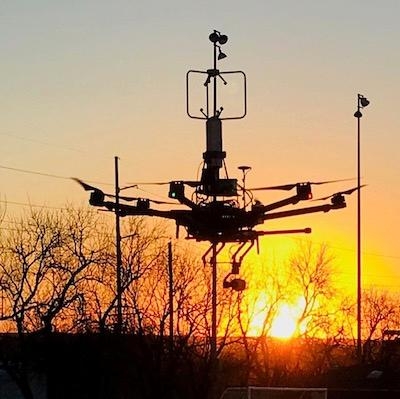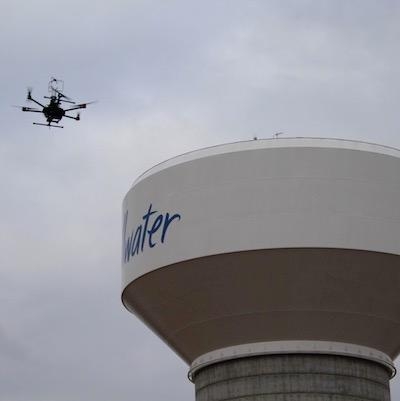Grant Award Only One Of Its Kind In Oklahoma
Oklahoma State University’s soaring drone program is taking off in yet another direction with multimillion-dollar support from the National Science Foundation.

The NSF has awarded a $1.49 million grant, part of its National Robotics Initiative 2.0 program, to OSU researchers He Bai, Rushikesh Kamalapurkar, Jamey Jacob and Matt Vance and former faculty member Balaji Jayaraman. The only grant of its kind awarded in Oklahoma will fund research that will use drone technology to estimate wind conditions in differing environments. While the idea of attaching wind-measuring devices to an unmanned vehicle isn’t itself groundbreaking, making drones able to measure wind speeds without additional devices is new.
As part of the university’s Tier 1 Research Initiatives involving drones in public health and safety, the team will utilize the unmanned aerial vehicles (UAVs) to measure differing wind conditions in various environments. The idea is that an unmanned vehicle on a set flight path can report wind conditions using the magnitude and direction of deviation from its preset flight path. The project will also investigate how to improve the safety and efficiency of drone operations based on wind estimates.
The research team has worked on relevant research projects for the National Science Foundation, NASA and Oklahoma Established Program to Stimulate Competitive Research (EPSCoR) and understands the need for better methods to model and predict wind and estimate UAV trajectory in different wind environments. These methods are paramount to the continued progression of UAV traffic in urban environments. With several companies experimenting with using UAVs to deliver packages, technology and methods like the one proposed by the OSU team will be vital to the future simultaneous deployment of multiple drones.

The idea of an aerial “highway” system in urban areas is not unfathomable. In fact, NASA is currently working on an unmanned traffic management system to provide virtual drone highways.
However, the weather data from those environments must be collected and interpreted efficiently in order to relay it to pilots and traffic management in real time so multiple vehicles can safely occupy the small spaces of urban environments. The system will be useful for urban air mobility or air taxi applications, as well.
The team intends to focus on information that will be useful to unmanned vehicle pilots and how to use the vehicle, in collaboration with other nearby vehicles, to analyze and predict the wind phenomenon it is experiencing and relay that information back to the pilot for adjustments.
The team will utilize numerous resources available through OSU and the Unmanned Systems Research Institute, including the new Excelsior laboratory and indoor drone aviaries, as well as simulation facilities and outdoor flight facilities.
OSU’s team hopes that this four-year project will be the foundation for a better understanding of wind and weather phenomenon encountered by UAVs in urban environments.
OSU is focusing on four Tier 1 Research Initiatives based on the societal needs they address. The initiatives are in drone technology, opioid understanding and treatment, understanding the interconnectivity of the microbiome and ensuring the viability of rural communities in the future.
(Images provided with OSU news release)
 ANN's Daily Aero-Term (05.09.24): Hold Procedure
ANN's Daily Aero-Term (05.09.24): Hold Procedure ANN's Daily Aero-Term (05.06.24): Altitude Readout
ANN's Daily Aero-Term (05.06.24): Altitude Readout ANN's Daily Aero-Linx (05.06.24)
ANN's Daily Aero-Linx (05.06.24) Airborne-NextGen 05.07.24: AI-Piloted F-16, AgEagle, 1st 2 WorldView Sats
Airborne-NextGen 05.07.24: AI-Piloted F-16, AgEagle, 1st 2 WorldView Sats Aero-News: Quote of the Day (05.07.24)
Aero-News: Quote of the Day (05.07.24)




